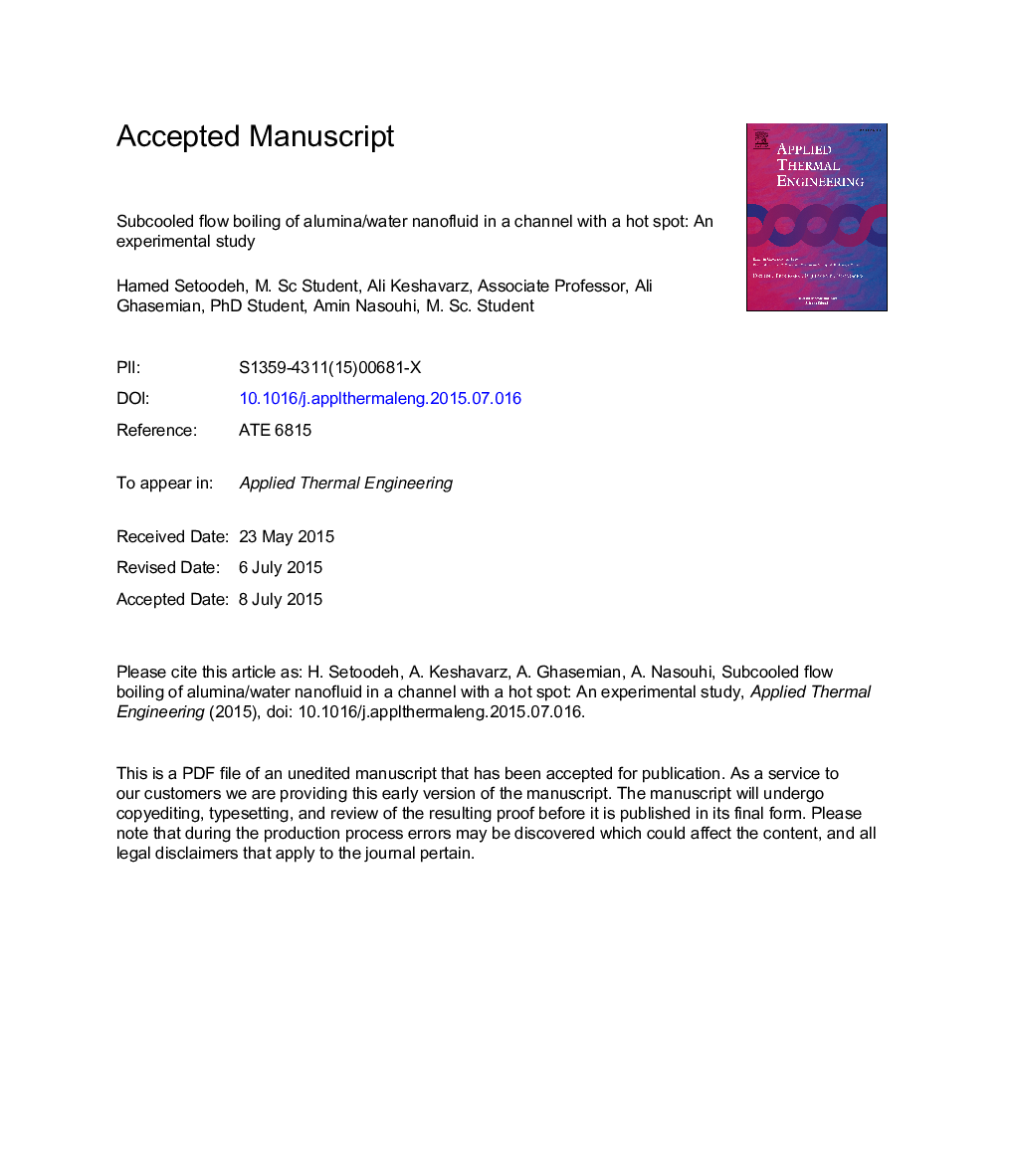| Article ID | Journal | Published Year | Pages | File Type |
|---|---|---|---|---|
| 7048847 | Applied Thermal Engineering | 2015 | 25 Pages |
Abstract
Nanofluids are the fluids with nanoscale particles in size which have capability to improve the heat transfer coefficient in many cases. In this experimental study, the subcooled flow boiling of alumina/water nanofluid with volume fraction of 0.25% along a channel with a hot spot is carried out. The purpose of this experimental test rig is to create the most resemblance condition to an Internal Combustion Engine (ICE) water jacket coolant to study the effect of fluid velocity and surface roughness on the coolant while boiling taking place. The setup consists of a 12 mm circular heater that is placed on the lower wall of a channel with 20 Ã 30 mm2 cross section. The fluid velocities and surface roughness are 0.5, 0.7,0.9 m/s and 0.65,4.4,15.1 μm respectively. The experimental results show that by increasing the surface roughness and fluid velocity the surface heat fluxes increase. The pure force convective and the flow boiling heat transfer coefficients of the nanofluid are also increased with respect to pure water. Based on the experimental measured data, two new independent empirical correlations are presented for the flow channel. These two models can be used to determine the subcooled flow boiling heat transfer inside a channel with a hot spot with good accuracy.
Related Topics
Physical Sciences and Engineering
Chemical Engineering
Fluid Flow and Transfer Processes
Authors
Hamed Setoodeh, Ali Keshavarz, Ali Ghasemian, Amin Nasouhi,
